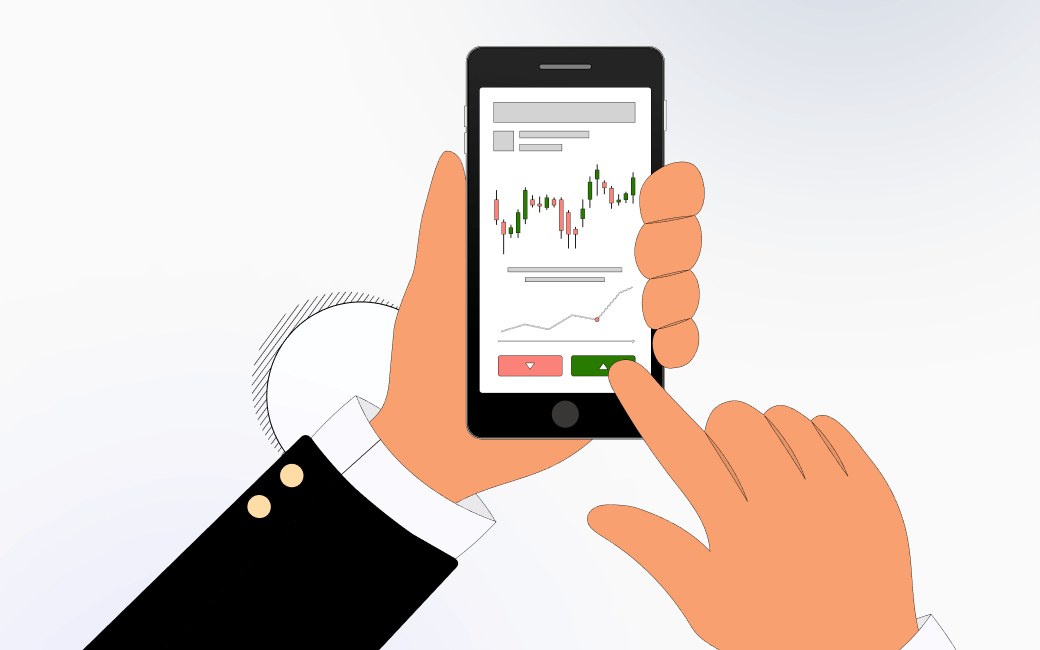Key Takeaways:
- Managing risk in trading is part of every successful trader’s strategy.
- Clear and well-defined risk management techniques increase your chances of trading success.
What Is Risk Management In Finance?
Have you ever thought you had to take huge risks in finance in order to get huge returns? If yes, then you’re not alone. A lot of traders and investors assume you have to take outsized risks to get a bountiful return on a trade or investment.
In reality, however, this is not the case. Risk management in finance essentially comes down to rules and processes put into your strategy. Their goal is to reduce, or control, losses that may incur in a trade. What you are looking to get from trading risk management is to maintain an optimal risk/reward ratio.
In other words, managing risk is supposed to guarantee you your account will grow bigger as you cut losses early and let profits run. You can do that by introducing certain techniques in your trades that will make sure you cannot lose more than you have defined even before you opened a trade.
How Does Risk Management Apply To The Stock Market?

How does this work? For example, placing a simple stop loss order on your stock trade will eliminate the chances of losing more than you have allowed. Let’s say you have opened a trade on Apple shares at $200. You invest $1000 in it, or 5 shares, if no leverage is taken. For every $1 move in Apple’s price, you get $5 of profit.
And you want to cut your losses at a 5% drawdown, meaning your position should close at a floating loss of $50. That means you’ve set up your stop loss order to automatically close your position when your investment shrinks to $950. In other words, Apple stock should fall 5% to $190 a share.
By placing stop loss orders on your trades, you give your trading account protection from steep drops and unforeseen events. Moreover, you approach the market in a way that allows you to control the risk you take with any entry you make in financial markets.
Managing Risk As An Investor
Managing risk in trading is absolutely crucial for any professional investor. What retail traders can do in this regard, is see how the big guys in the industry tackle risk.
Ray Dalio, the founder of the world’s biggest hedge fund, Bridgewater Associates, is a macro investor. This means he looks for trading opportunities across every asset class such as stocks, currencies, gold, and even bitcoin and crypto. His trading and investing strategy assumes a great amount of risk control.
“In trading you have to be defensive and aggressive at the same time,” he says. “If you are not aggressive, you are not going to make money, and if you are not defensive, you are not going to keep money.”
In other words, managing risk in trading goes hand in hand with staying disciplined and sticking to your own trading rules.
Another legendary trader, Paul Tudor Jones, also puts great weight on trading risk management. “The most important thing is how good you are at risk control,” he notes. “Look for tremendously skewed reward-risk opportunities,” Mr. Jones also adds.
Managing Risk As A Trader
The main difference between a trader and an investor is basically the time frame of holding onto a position. In more detail, a trader would hold a certain position for less than a day or a few months. Long-term investors, on the other hand, would remain invested in the market for years at a time.
A prominent example of a traditional investor is Warren Buffett. He’s famous for almost never selling his shares in companies like Coca-Cola, a stack he began gathering in 1987.
It’s important to say that with the current market developments, defining the difference between a trader and an investor has been more challenging. With the arrival of cryptocurrency in the investing field, individuals around the world have had the chance to grow and develop a whole new asset class.
And while traditional stocks and currencies are mostly comprised of institutions and money managers, crypto assets are owned largely by the retail community. Nevertheless, managing risk is essential for both traders and investors alike.
Dealing With Black Swan Events

Perhaps the most telling moment for a trader’s risk strategy is when a Black swan event occurs. Black swans are those events in global markets that are unpredictable and often have devastating consequences. While the definition is fairly easy to understand, it’s difficult to say precisely which past events are Black swans.
The global financial crisis of 2008 is considered the most well-known Black swan event. The coronavirus pandemic, however, does not fall under the characteristics of a Black swan, says Nassim Taleb who coined the phrase in 2007.
No matter the case, any sudden, unusual, and impossible-to-see event might wipe out your trading account if you don’t have a proper risk management setup.
On that note, the best way to minimize any serious meltdown of your funds is to manage your risk wisely. Not only how much you can lose, but also how much you expect to make. Get these two right, and your chances of winning grow substantially.
Manage Your Risks
In conclusion, the difference between winning and losing in the markets is all about managing your risk. How you deal with risk is not a one-off event. Instead, managing risks in trading, or options trading, begins with each new trade.
This said, traders who use leverage must make sure their risk is properly controlled. While leverage trading offers a high potential reward, it could result in deeper losses. With this in mind, leverage allows you to put forward a bigger amount of funds when opening a position.
What you actually trade with is called margin, while the liquidity provider, i.e. your broker, takes care of the bigger percentage of the value of the trade. Still, the full amount could reach 500 times your initial investment. On this note, make sure you have your risk control strategy clearly defined and put to use.
And remember, you either want to keep your investments small and let them run long-term. Or you can skew your risk-reward ratio and see bigger profits in the short-term but risk being wrong more often.
TradeOr Is Your Place To Trade On Financial Markets
We, at TradeOr, want to make sure you understand the financial markets and have the right approach. Reach out to us anytime you like and we’ll be happy to help out with any questions you might have. Meanwhile, enjoy our trading platform where you can invest into every market from forex, to stocks, to cryptocurrencies and much more.
FAQ
- What Is Risk Management To A Trader?
Risk management to a trader means having clearly-defined rules that make sure you won’t lose more than you have allowed. In other words, keep a stop loss order and don’t invest too much so you’d lose sleep.
- How To Limit Risk As A Trader?
Limiting risk as a trader will give you comfort and peace of mind. All you need to do is control your exposure to the market by setting a stop loss order. Also, carefully decide how much you want to risk in a trade, and how much you expect to win.
- How Much Should You Risk When Trading?
A good rule of thumb is to risk no more than 2% from your capital in a single trade. Still, be your own judge, find your style, and decide what’s best for you as a trader.